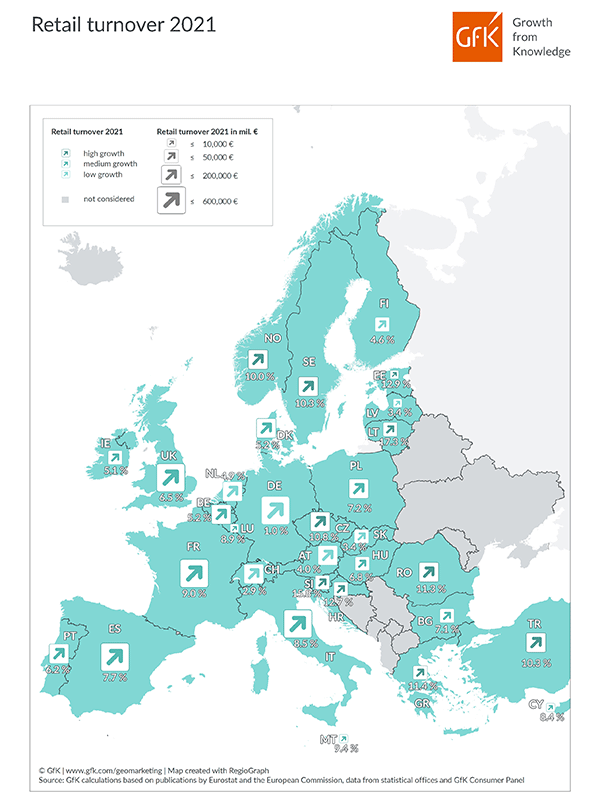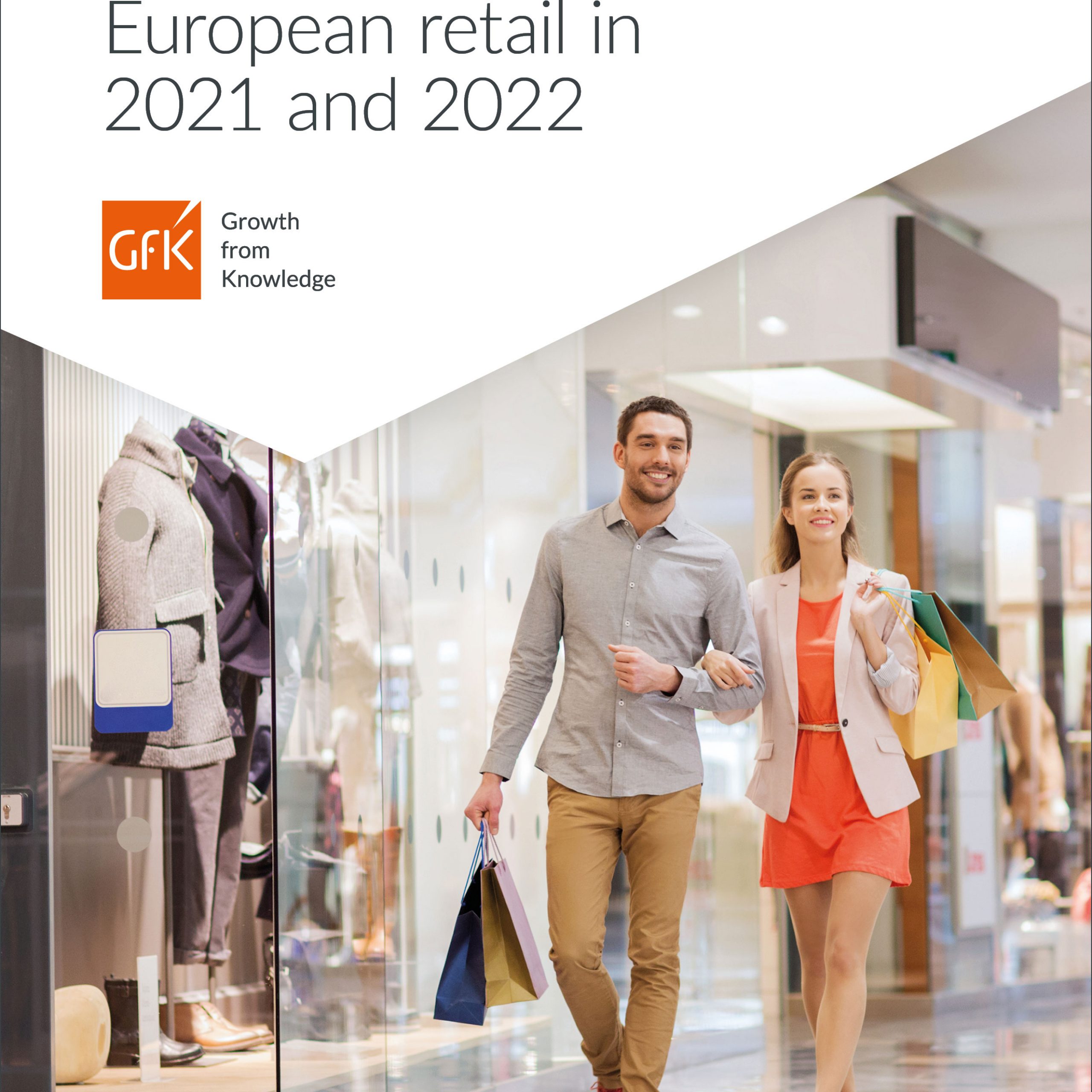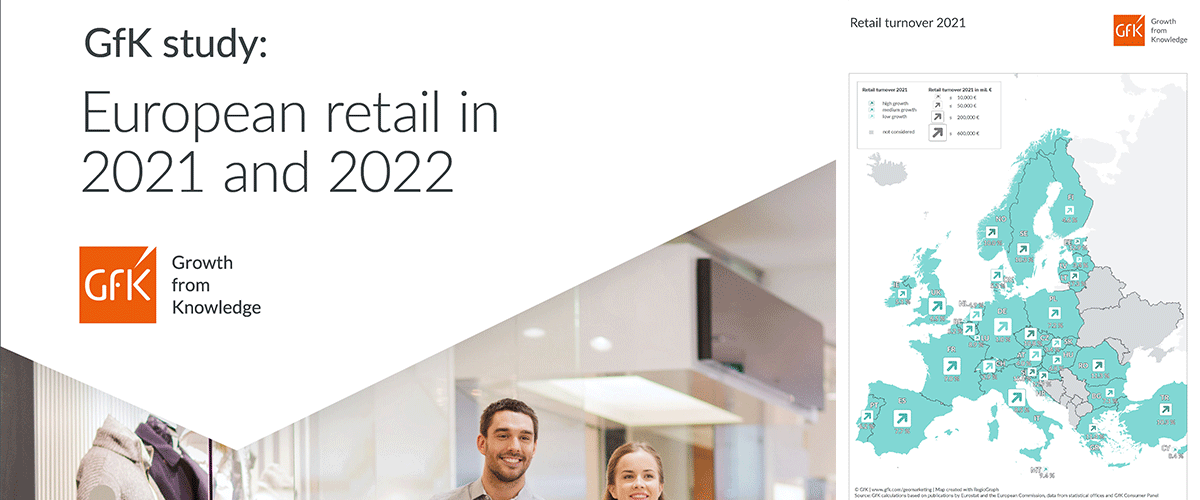The purchasing power of European citizens, which has been stabilized in many countries over the past two years by means of government intervention, will decrease significantly in price-adjusted terms in large parts of Europe this year.
However, the past two years in this difficult market environment have still been encouraging for the entire retail sector from a revenue perspective. After the retail sector in the 27 EU states recorded a turnover increase of 1.5 % in 2020, the first COVID-19 year, sales significantly increased by 6.8 % in 2021. The highest growth rates were in smaller Eastern European countries, such as Lithuania (up 17 %), Slovenia (up 16 %), and Estonia (up 13 %). Larger markets, such as France, Spain, and Italy also recorded retail growth rates of over 7 %. This is shown by the new study on retail in Europe, in which GfK’s Geomarketing solution area examined important key indicators.
In addition to retail turnover, the study analyzes the distribution of purchasing power in Europe as well as the retail share of consumers’ total expenditures and consumer price trends in 2021 and 2022. Special chapters also take a closer look at the topic of “Future buying” and regional online purchasing behavior in some European countries.
Additional key results at a glance
Purchasing power: The nominal purchasing power of EU citizens grew by an average of 2.4 % in 2021. After many non-euro countries such as the Czech Republic, Croatia and Norway had to contend with reduced purchasing power in 2020, which was also due to exchange rate effects, many of these countries were able to benefit from both, better macroeconomic development and a strengthening of their national currencies. Accordingly, purchasing power in 2021 grew by more than 5 % in each of the first two countries, and by over 8 % in Norway.
Share of retail turnover in private consumption: Despite lockdowns and access restrictions, the retail sector in the EU increased its share of private consumer spending to 35.8 %. Compared to 2019, before the pandemic, this means retailers gained 3.1 percentage points. Especially in Lithuania and Estonia, the retail turnover share of private consumption gained the most, compared to 2019, namely by at least 5.3 percentage points. But also, major EU markets including Germany, France, Spain and Italy increased between 3 and 4 percentage points.
Inflation: In 2021 inflation already was 2.9 %, EU-wide inflation is expected to rise to 6.8 % in 2022 due to high energy prices and the war in Ukraine. The price increase is particularly significant in many Eastern European countries. For example, consumer prices in Lithuania, Estonia, Bulgaria, the Czech Republic, and Poland are expected to grow at double-digit rates.

Future buying: In Western Europe, the range of products available for retail purchases via augmented or virtual reality is very limited and varies greatly from country to country. For instance, Spain and the United Kingdom are Western European leaders, while the German-speaking countries lag behind in this area.
Regional online purchasing behavior: In the countries bordering the Mediterranean Sea, Sweden and Switzerland, there is a clear urban-rural contrast. In these states, the online-savvy population tends to be found in large cities and metropolitan areas, while the rural population tends to be more focused on brick-and-mortar retail. In Germany, Austria, the Netherlands, Belgium, and the United Kingdom, higher index values are sometimes found in smaller municipalities.








